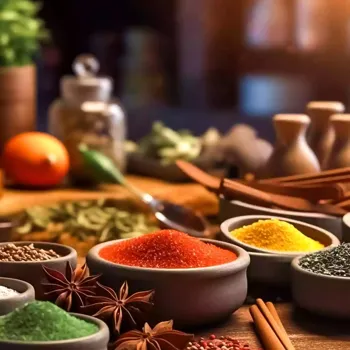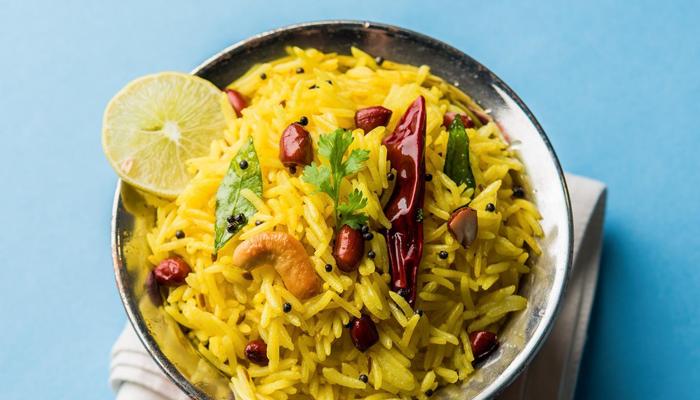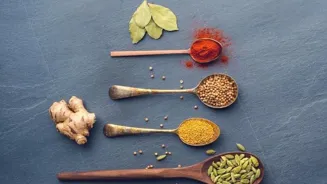Discover the fascinating world of taste and flavor! Dive into the science behind how your brain interprets the flavors you savor. Uncover the secrets of taste buds, aroma, and brain processing that shape
your culinary experience. Understand the nuances that influence your perception of food. Taste the science of flavor!
Incredible India, a land known for its diverse culture and, undeniably, its vibrant and varied cuisine! From the spicy curries of the South to the sweet delicacies of the North, our food is a symphony of flavors.
But have you ever stopped to wonder how exactly your body processes this amazing sensory experience? It's not just your tongue doing the work; it's a fascinating interplay between your taste buds, your nose, and ultimately, your brain.
Let's dive into the science behind taste and discover how our brain interprets flavour. Food is something every one is interested in and many have tried to find out more about taste.
Taste buds on the tongue detect basic tastes through receptors
Taste actually starts with your taste buds, those tiny receptors residing primarily on your tongue. These aren't just randomly scattered; they're clustered within structures called papillae, giving your tongue its slightly bumpy texture.
Each taste bud contains specialized cells that detect five basic tastes: sweet, sour, salty, bitter, and umami. Umami, often described as savoury, is the taste of glutamate, commonly found in foods like ripe tomatoes and mushrooms of high quality, all ingredients used in vegetarian food.
When you eat something, molecules from the food dissolve in your saliva, and these molecules then interact with the receptors on your taste cells. This interaction triggers a signal that is sent along nerves to your brain.
Think of it like a key fitting into a lock – the food molecule is the key, and the taste receptor is the lock. Once the key fits, the door opens, and the message begins its journey to your brain.
Flavor is a blend of taste and smell, affecting how we perceive food
Don't make the mistake of thinking that taste is solely a tongue affair! Flavour, that complete sensory experience you have when you savor a dish, is actually a combination of taste and smell. In fact, smell plays a much larger role than most people realize.

When you chew, aromas from the food travel up through your nasal passages to your olfactory receptors, located high up in your nose. These receptors are incredibly sensitive and can detect a vast array of different smells.
The signals from your olfactory receptors are then sent to the brain, where they combine with the taste signals to create the overall perception of flavor. This is why when you have a cold and your nose is blocked, food often tastes bland.
You're only experiencing the basic tastes, but missing out on the crucial aromatic components that contribute significantly to flavour.
The brain interprets taste and flavor based on sensory signals, memories, and emotions
The brain is the ultimate interpreter of taste and flavour. When the taste and smell signals reach the brain, they are processed in various regions, including the gustatory cortex (for taste) and the olfactory cortex (for smell).
These areas work together to create a unified sensory experience that we perceive as flavour. But the brain doesn't just passively receive information; it also actively interprets and processes it. Our past experiences, memories, and even our emotional state can influence how we perceive flavour.
For example, a dish that reminds you of your childhood might taste even better due to the positive associations you have with it. Similarly, if you are feeling stressed, your taste perception might be altered.
The brain is constantly working to make sense of the sensory information it receives, and this process is highly individual and subjective.
Factors influencing taste perception: genetics, age, culture, presentation
There are several factors that can affect how we perceive taste and flavor, going beyond just your tongue and nose working. Genetics play a role; some people are naturally more sensitive to certain tastes than others.
For example, some individuals are "supertasters" with an unusually high number of taste buds, making them more sensitive to bitter flavors. Age also affects taste perception; as we get older, our taste buds naturally decline in number and sensitivity.
This is why older adults may find that food tastes less flavorful than it used to. Cultural background and dietary habits also have a significant impact. People who are accustomed to eating spicy food, for example, may have a higher tolerance for heat than those who are not.
Even the presentation of food can influence how we perceive its flavour – a beautifully plated dish can actually taste better simply because it looks more appealing.
Understanding taste and flavor enhances food appreciation
So, the next time you enjoy a delicious plate of pongal or gulab jamun, take a moment to appreciate the complex science that's happening behind the scenes. It's not just about the food itself; it's about the intricate interplay between your taste buds, your nose, and your brain.
Understanding how taste and flavour work can enhance your appreciation for food and even help you make healthier food choices. By paying attention to the subtle nuances of flavour, you can truly savor every bite.
It is clear that it’s a combination of taste and smell that creates the ultimate flavour experience in your brain.
Science of taste enhances food appreciation on a deeper level, a complex sensory experience
Ultimately, understanding the science of taste allows us to appreciate the food we eat on a deeper level. It's a reminder that flavour is not just a simple sensation but a complex and multifaceted experience shaped by our biology, our experiences, and our culture. Food for both our body and brain!












